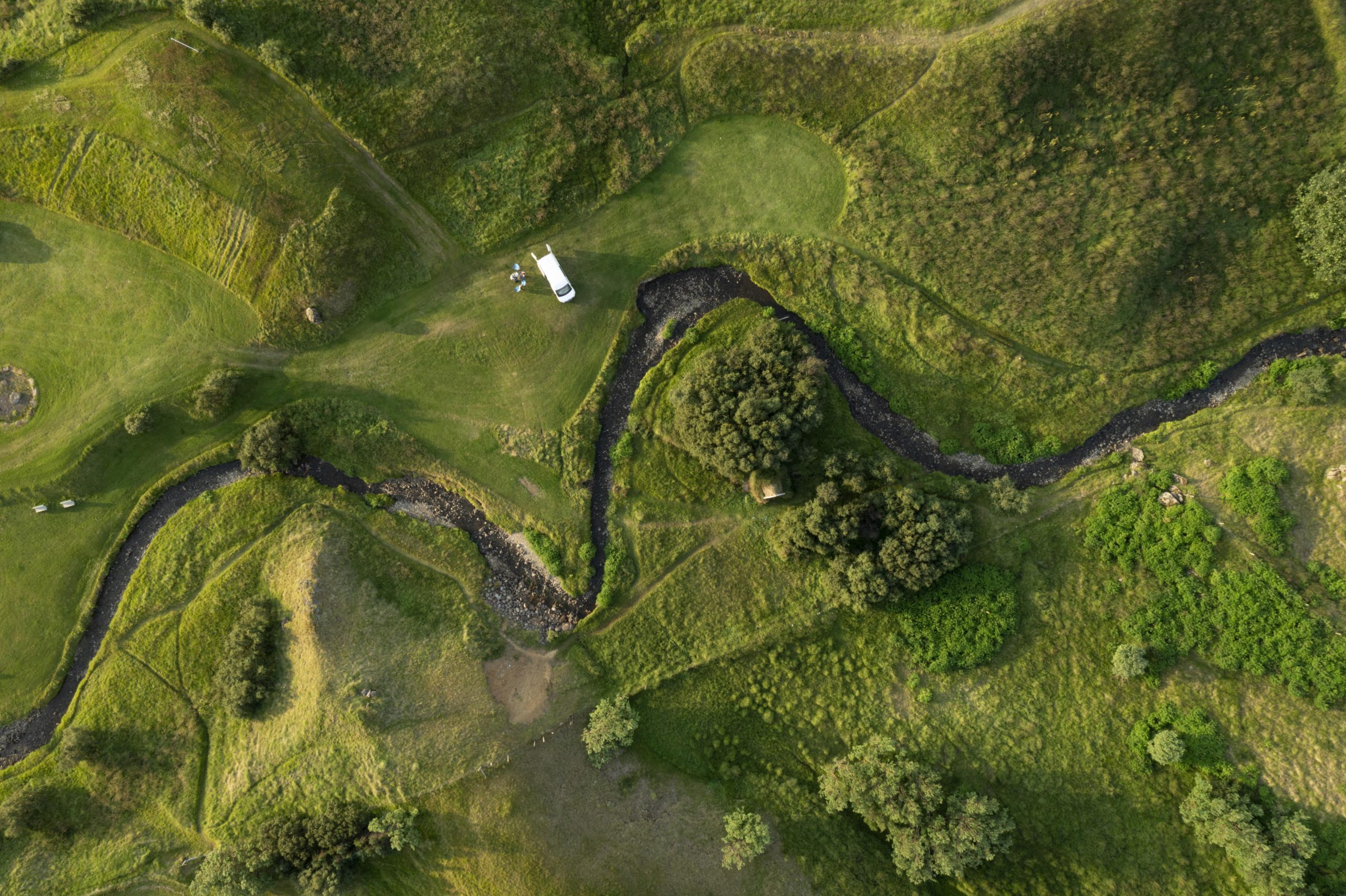Synopsis
When a century-old layout begins to sag under modern equipment and erratic climate swings, owners turn to old golf course renovation design firms that specialise in history-minded renewal. The challenge is to revive strategic intent without erasing the patina that made the course beloved. An experienced golf designer firm begins by studying faded contour maps and aerial archives, then marries that knowledge to lidar scans that reveal subsurface drainage failures. Collaboration with forward-thinking golf design companies adds technology that hides beneath classic visuals, while a meticulous golf course design architect redraws green perimeters to recover lost pin positions. A detail-oriented golf designer architect hand-shapes bunker lips so they flash as they did decades ago, and a pragmatic golf consultant architect validates playability metrics for today’s ball speeds. The result is a revitalised course that honours its lineage yet meets contemporary expectations for sustainability, resilience and shot variety.
Table Of Content
- Respecting the Ghost Lines Beneath the Turf
- Strategic DNA: Recovering Lost Angles of Attack
- Materials That Age Gracefully in Modern Climates
- Drainage, Irrigation and the Invisible Upgrade
- Balancing Shot Values for Contemporary Equipment
- Phased Construction That Protects Member Play
- NWD Golf’s Philosophy on Heritage Restoration
- Service Framework for Long-Term Stewardship
Respecting the Ghost Lines Beneath the Turf
Every renovation starts with a forensic read of the ground. Specialist old golf course renovation design firms peel back decades of topdressing to expose original fairway lines now buried under rough. An experienced golf designer firm overlays lidar contours on yellowed routing sheets, revealing where landforms once guided run-out. By tracing these “ghost lines,” the golf course design architect identifies seminal ridges that deserve resurrection. Soil plugs are analysed to confirm whether native sands can be reincorporated into new profiles, reducing import costs. The golf designer architect then sketches preliminary grading tweaks that coax wind-shaped movement back into dormant corridors. Finally, a cautious golf consultant architect cross-checks legal setbacks to be sure restored fairways still meet today’s safety codes.
Strategic DNA: Recovering Lost Angles of Attack
Tree encroachment, yardage inflation and bunker erosion often mute original angles. To reveal strategic DNA, elite golf design companies conduct drone flyovers that measure canopy spread and sun paths. Working in tandem, the golf designer architect sketches removal plans that spotlight landmark vistas without sacrificing habitat value. An experienced golf designer firm then re-edges greens to reclaim corner pins that once dared bold carries. Meanwhile, the golf consultant architect models dispersion charts for modern ball speeds, ensuring heroic lines remain rewardable yet fair. Throughout, the guiding principle for old golf course renovation design firms is preservation of intent, not replication of obsolete yardages.
Materials That Age Gracefully in Modern Climates
Heritage bunkers lose detail when heavy rain slumps sand faces. A knowledgeable golf course design architect tests native soils for permeability and sources sand blends that lock in place yet flash bright. Timber sleepers rot in humid zones, so golf design companies specify charred hardwood or recycled polymer edging that mimics vintage visuals while resisting decay. The golf designer architect treats members to period-correct aesthetic while granting superintendents durable solutions. An advising golf consultant architect corroborates that chosen materials meet certification for recycled content and regional sourcing, reinforcing environmental credentials championed by experienced golf designer firm teams.
Drainage, Irrigation and the Invisible Upgrade
Players rarely notice sub-surface engineering, yet it defines year-round consistency. Specialist old golf course renovation design firms laser-grade sub-bases to establish gravity drainage that originally existed before decades of topsoil accretion. A partnering golf designer architect slips slit-drain lattices into fairway low spots, protected by capillary concrete in revetted bunkers. Modern variable-rate irrigation, mapped by leading golf design companies, reduces water use by targeting micro-zone moisture deficits rather than blanket applications. The golf course design architect sketches valve clusters outside historical sight lines to preserve period aesthetics. An oversight golf consultant architect signs off performance tests, ensuring the invisible upgrade meets sustainability goals.
Balancing Shot Values for Contemporary Equipment
Drivers fly farther; wedges spin harder. Renovation therefore recalibrates risk-reward. An experienced golf designer firm introduces alternate tees to separate swing speeds without altering flagship hazards. Greens are recontoured by a craftsman golf designer architect to sustain original tilt ratios while expanding pinnable area for higher green speeds. Advanced roll-out models supplied by golf design companies confirm approach firmness under modern compression rates. Meanwhile, the golf consultant architect validates that rebuilt bunkers collect marginal shots rather than centre-line drives. Such calibration lets old golf course renovation design firms deliver authentic heritage flavour while remaining competitively relevant.
Phased Construction That Protects Member Play
Closures anger stakeholders, so phasing is critical. A veteran golf course design architect sequences work in nine-hole pods, directing temporary routings that preserve revenue flow. The earthworks crew, briefed by an experienced golf designer firm, isolates haul roads from play corridors to limit turf compaction. Reporting dashboards crafted by golf consultant architect teams update boards weekly, maintaining transparency. Collaboration with golf design companies schedules hydro-seeding windows so grow-in aligns with seasonal germination peaks, accelerating reopening. By adhering to such choreography, old golf course renovation design firms deliver transformative change without lengthy shutdowns.
NWD Golf’s Philosophy on Heritage Restoration
NWD Golf approaches legacy assets as living museums where every ridge and swale narrates past eras of strategy. Our design studio integrates historians, agronomists and hydrologists to revive original shot values while embedding twenty-first-century resilience. Unlike many golf design companies, we house architectural and construction expertise under one roof, allowing iterative problem-solving that respects budgets and timelines. Our experienced golf designer firm mindset is to let the land speak first and technology whisper quietly behind the scenes.
Service Framework for Long-Term Stewardship
Heritage renewal extends beyond inauguration day. Our process begins with feasibility audits led by a seasoned golf consultant architect, advances through schematic visualisation guided by a visionary golf course design architect, and culminates in site observation where senior shapers refine every contour. Post-handover, agronomy teams supply data sets so superintendents keep greens true to architect intent. By aligning with best practices championed by leading old golf course renovation design firms, NWD Golf safeguards historical integrity while future-proofing play for generations.
Service Framework for Long-Term Stewardship
Heritage renewal extends beyond inauguration day. Our process begins with feasibility audits led by a seasoned golf consultant architect, advances through schematic visualisation guided by a visionary golf course design architect, and culminates in site observation where senior shapers refine every contour. Post-handover, agronomy teams supply data sets so superintendents keep greens true to architect intent. By aligning with best practices championed by leading old golf course renovation design firms, NWD Golf safeguards historical integrity while future-proofing play for generations.
Why choose old golf course renovation design firms over new-build specialists?
Renovation specialists possess archival research skills, heritage contour literacy and construction phasing expertise absent in many new-build teams. They can decode original strategies, integrate modern infrastructure invisibly and manage stakeholder expectations tied to nostalgic attachment. Such firms balance authenticity with regulatory compliance, ensuring the course regains competitive relevance without losing its soul.
How does an experienced golf designer firm protect historical character?
Experienced firms commence with detailed landscape forensic studies, mapping original landforms and green perimeters. They restore strategic sight lines by selective tree management and recreate bunker aesthetics using era-appropriate sand flashing. Any modern intervention—drainage, irrigation, turf upgrade—is camouflaged beneath traditional visuals, ensuring renewed performance coexists with authentic ambience.
What role does a golf course design architect play in bunker restoration?
A golf course design architect analyses archival photos to match bunker scale, angle and texture. They craft updated subsurface drainage, specify durable liner materials and oversee shaping to re-establish dramatic faces. Precision ensures bunkers perform under modern rainfall intensities while echoing their historical silhouette, safeguarding both playability and heritage.
Why involve a golf consultant architect during feasibility?
A golf consultant architect audits cost forecasts, regulatory hurdles and agronomic realities before ground is broken. Their objective assessments identify hidden risks—soil instability, heritage tree ordinances, water rights—that could derail schedules. Their guidance refines scope, aligns budgets and secures approvals, ensuring renovation proceeds with clear expectations.
How do golf design companies integrate sustainability into heritage upgrades?
Leading companies embed drought-tolerant turf, precision irrigation and regenerative drainage while respecting historic contouring. They specify recyclable materials, reuse on-site sand when possible and design native rough zones for pollinator habitat. These measures reduce resource consumption and maintenance cost without compromising the course’s traditional aesthetic or strategic ethos.
Garrett Wasson is a registered landscape architect and member of the American Society of Golf Course Architects. With a background in turf-grass science and hands-on construction management, he blends technical rigour with creative vision across projects in North America and Asia. Garrett’s passion lies in revitalising classic courses, ensuring their strategic brilliance endures amid modern agronomic and environmental demands.
- Garrett Wassonhttps://nwdgolf.com/blogs/author/garrett-wasson/
- Garrett Wassonhttps://nwdgolf.com/blogs/author/garrett-wasson/
- Garrett Wassonhttps://nwdgolf.com/blogs/author/garrett-wasson/
- Garrett Wassonhttps://nwdgolf.com/blogs/author/garrett-wasson/


